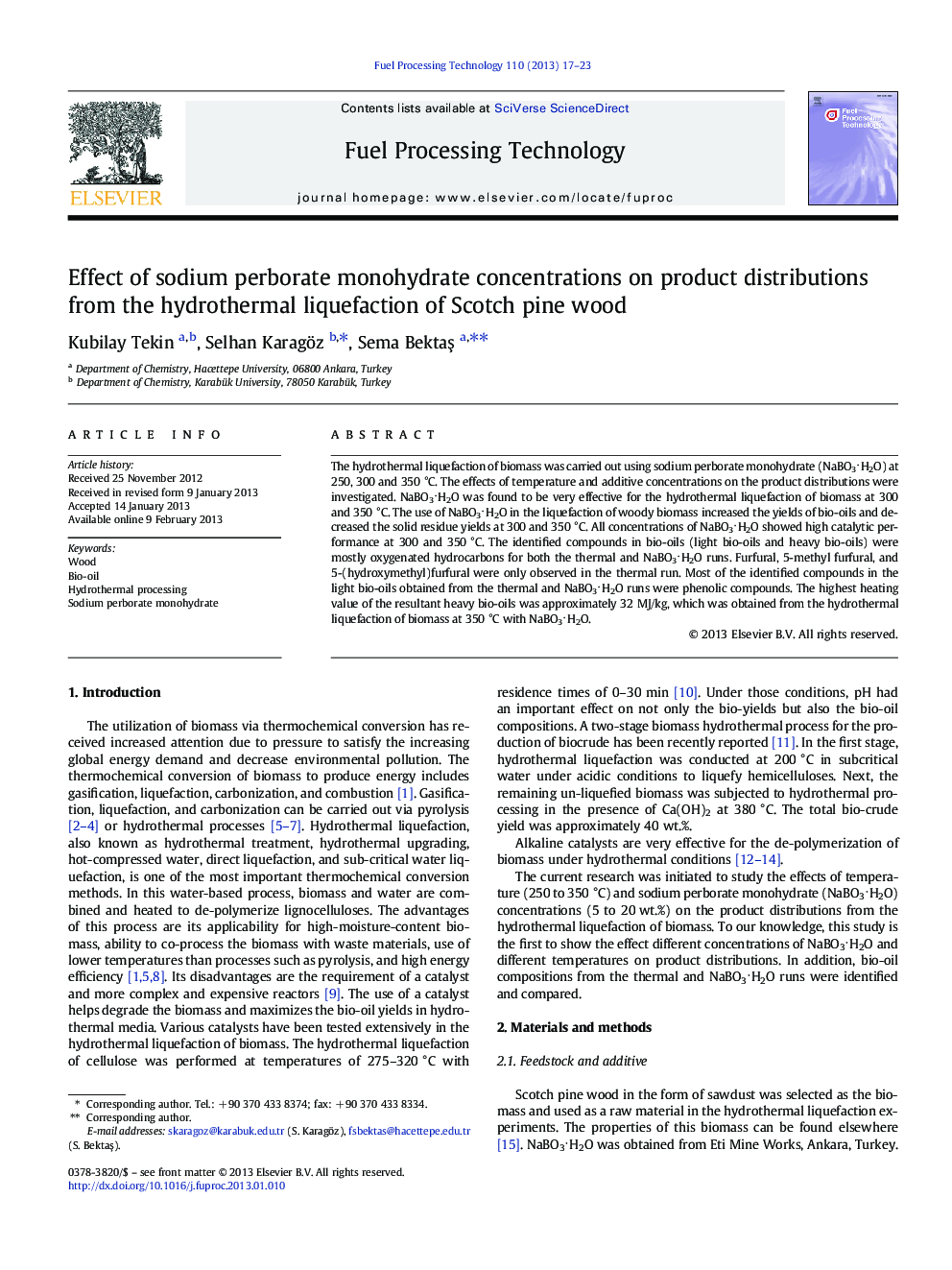| Article ID | Journal | Published Year | Pages | File Type |
|---|---|---|---|---|
| 209975 | Fuel Processing Technology | 2013 | 7 Pages |
The hydrothermal liquefaction of biomass was carried out using sodium perborate monohydrate (NaBO3⋅H2O) at 250, 300 and 350 °C. The effects of temperature and additive concentrations on the product distributions were investigated. NaBO3⋅H2O was found to be very effective for the hydrothermal liquefaction of biomass at 300 and 350 °C. The use of NaBO3⋅H2O in the liquefaction of woody biomass increased the yields of bio-oils and decreased the solid residue yields at 300 and 350 °C. All concentrations of NaBO3⋅H2O showed high catalytic performance at 300 and 350 °C. The identified compounds in bio-oils (light bio-oils and heavy bio-oils) were mostly oxygenated hydrocarbons for both the thermal and NaBO3⋅H2O runs. Furfural, 5-methyl furfural, and 5-(hydroxymethyl)furfural were only observed in the thermal run. Most of the identified compounds in the light bio-oils obtained from the thermal and NaBO3⋅H2O runs were phenolic compounds. The highest heating value of the resultant heavy bio-oils was approximately 32 MJ/kg, which was obtained from the hydrothermal liquefaction of biomass at 350 °C with NaBO3⋅H2O.
Graphical abstractFigure optionsDownload full-size imageDownload as PowerPoint slideHighlights► Woody biomass was converted into bio-oil via hydrothermal processing in the absence and presence of NaBO3⋅H2O. ► The effects of both temperature and additive concentration were investigated. ► The optimal experimental conditions for obtaining the maximum bio-oil yield were 300 °C by using 10 wt% of NaBO3⋅H2O.
